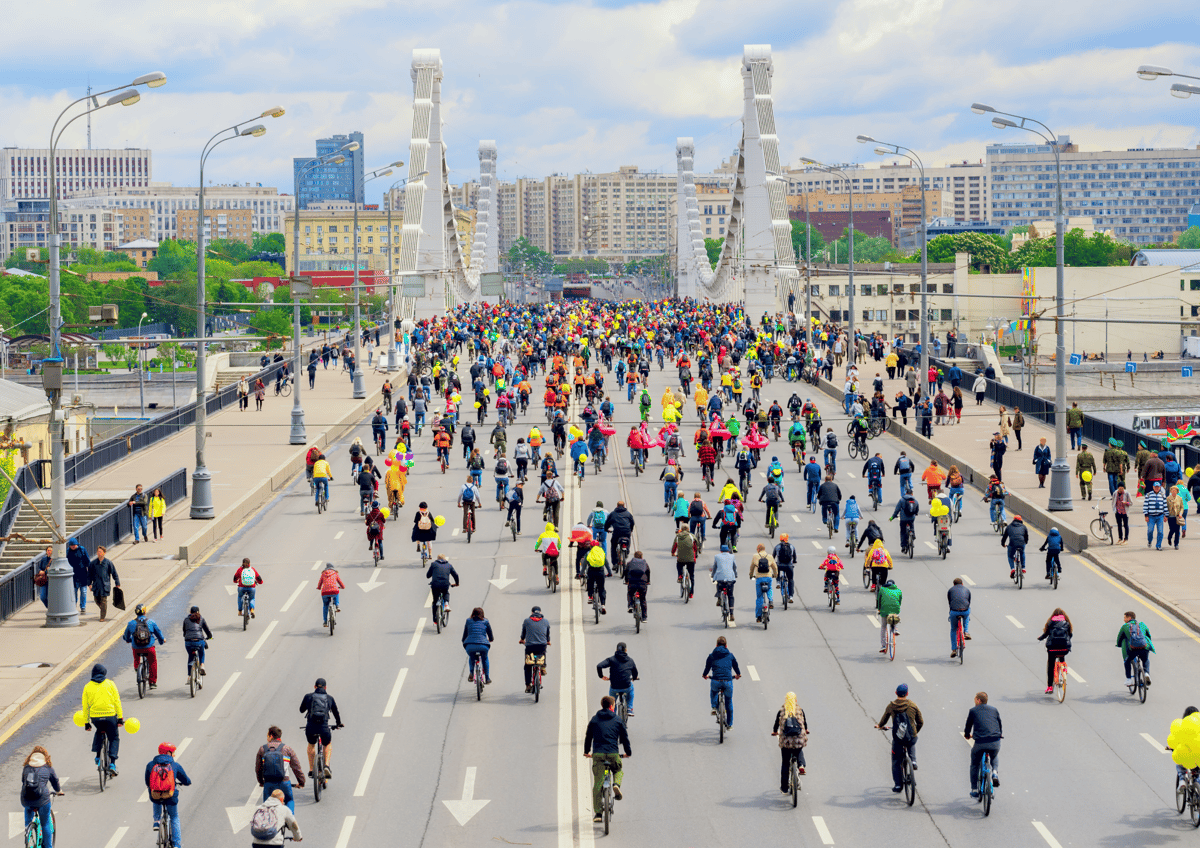
In recent years, the importance of cycling infrastructure in cities worldwide has increased significantly. In response to the challenges of climate change, traffic congestion and general quality of life, more and more cities are turning to cycle paths and infrastructure to create a sustainable and liveable environment.
Cycling infrastructure is not just about transportation, it touches on various aspects of urban life. Here are some points that show why bike lanes and infrastructure are so crucial to the quality of life in cities.
Promoting cycling contributes to the physical health of citizens*. The daily use of bicycles as a means of transportation can reduce the risk of cardiovascular disease, obesity and other health problems. In addition, regular exercise has a positive effect on mental well-being and can reduce stress.
Transportation is one of the main sources of greenhouse gas emissions in urban areas. By encouraging more people to cycle, CO2 emissions are reduced and air quality is improved. This helps to make cities more sustainable and environmentally friendly.
Bicycles take up less space than cars and can therefore help to relieve traffic congestion in busy urban areas. This leads to a smoother flow of traffic, less congestion and shorter commuting times for all road users.
Münster is an impressive example of how consistent investment in cycling infrastructure can improve the quality of life in a city and at the same time achieve positive economic effects. The effects of these investments are manifold.


In recent decades, Beijing has made enormous efforts to reduce traffic and air pollution in the city. One measure has been the promotion of cycling through the construction of bike lanes and the introduction of bike rental systems. Although the intention to promote cycling as an environmentally friendly and healthy method of transportation is commendable, the example of Beijing shows that inadequate planning and implementation of cycling infrastructure can lead to undesirable consequences.

The city of Eindhoven has combined part of its cycle path network with a unique artistic idea: a luminous cycle path inspired by the famous painting "Starry Night" by Vincent van Gogh. The cycle path is equipped with thousands of glowing stones that light up in the dark and recreate the famous painting. This spectacular cycle path, officially known as the 'Van Gogh Cycle Path', was created to draw people's attention to the importance of cycling as an environmentally friendly mode of transportation while celebrating the beauty of art.
Eindhoven's Van Gogh Cycle Route is an example of how cycling infrastructure can not only be functional, but also create artistic, cultural and touristic value. It shows that even in the world of transportation planning, there is room for extraordinary and crazy ideas that can improve the quality of life in cities in unexpected ways. The impact of this extraordinary cycle path is impressive.
The Van Gogh Cycle Route has developed into a major tourist attraction that draws visitors from all over the world. The combination of art and cycling infrastructure makes the cycle route a unique experience that can only be found in Eindhoven.
The cycle route has also helped to boost cycle tourism in the region. People come not only to see the luminous art installation, but also to explore the surroundings by bike and enjoy the beauty of the Dutch countryside.
The Van Gogh Cycle Route shows how cycling infrastructure can be combined with creative ideas and innovative technologies to not only solve practical problems, but also create an inspiring and aesthetically pleasing environment.


Summary
The importance of cycling infrastructure for cities cannot be overemphasized. By creating safe and pleasant cycling routes and infrastructure, cities can improve their quality of life, protect the environment and boost the economy. The examples of successful cycle lane projects show that investment in cycling infrastructure can have a long-term positive impact on cities and their residents. It is therefore crucial that cities around the world continue to invest in cycling infrastructure and promote cycling as a sustainable and healthy mode of transportation.
Nevertheless, it is important to recognize that the creation of cycling infrastructure is not optimal in all situations and that its effectiveness depends on how well it is adapted to local conditions. There are cases where inadequate planning or unfavorable conditions do not have the desired, positive outcome. Therefore, careful consideration of local needs and holistic transportation planning is essential to achieve the best possible outcomes for the city and its residents.
At a time when work models and mobility concepts are changing rapidly, bike leasing opens up new opportunities for employees and employers alike. The traditional notion of workplace and commute has fundamentally changed in recent years. Flexibility, sustainability and well-being are gaining importance, and bike leasing is at the heart of these changes.

Bike leasing is becoming increasingly popular among employees and employers, as it not only promotes environmentally friendly mobility, but also offers other advantages.

In an increasingly urbanized world where environmental awareness and sustainability play an ever more important role, companies are looking for innovative solutions to optimize their corporate mobility. In recent years, corporate bike leasing has proven to be an attractive option for companies that want to promote both the health of their employees and environmental sustainability.
